In September 1897, near the Yukon River in Alaska, a truly remarkable specimen of Alaskan moose (Alces alces gigas) was harvested by an American hunter. This massive bull moose would later be confirmed as the largest moose ever recorded in history. Standing at an incredible shoulder height of approximately 7.6 feet (2.33 meters) and weighing an estimated 1,808 pounds (820 kg), this magnificent animal represented the pinnacle of moose development. The specimen’s antlers had a spectacular spread measuring 79 inches (200.7 cm) from tip to tip, creating an imposing silhouette that emphasized the incredible scale of this majestic creature.
What made this Alaskan giant particularly noteworthy was not just its overall size but the perfect storm of favorable conditions that allowed it to reach such proportions. Alaska’s abundant food resources, relatively limited predation on adult males, and the genetic predisposition of the Alaskan subspecies to grow larger than their counterparts elsewhere created the ideal circumstances for this record-setting individual. The discovery quickly gained attention in scientific circles and has maintained its status as the benchmark for maximum moose size for over a century.
Understanding the Alaskan Moose Subspecies

The Alaskan moose (Alces alces gigas) is recognized as the largest subspecies of moose in the world and the largest member of the deer family. This subspecies is distinguished by its massive size, dark brown coat, and impressive antlers found on males. Alaskan moose have evolved specific adaptations for the harsh northern environment, including longer legs to navigate deep snow, broader hooves that act as natural snowshoes, and thicker fur to withstand extreme cold temperatures. These evolutionary advantages have allowed them to thrive in the challenging Alaskan wilderness.
Genetically, Alaskan moose differ from other subspecies through adaptations that promote larger body sizes, likely an evolutionary response to Bergmann’s rule, which suggests that animals tend to be larger in colder environments to conserve heat more efficiently. Their distinctive size isn’t just impressive—it’s a crucial survival adaptation. An adult Alaskan bull moose typically stands between 6-7 feet at the shoulder and can weigh between 1,200 and 1,600 pounds, with females being somewhat smaller but still formidable at 800-1,300 pounds. This makes the record-holder from 1897 exceptional even among its already massive subspecies.
The Perfect Habitat: Alaska’s Moose Country
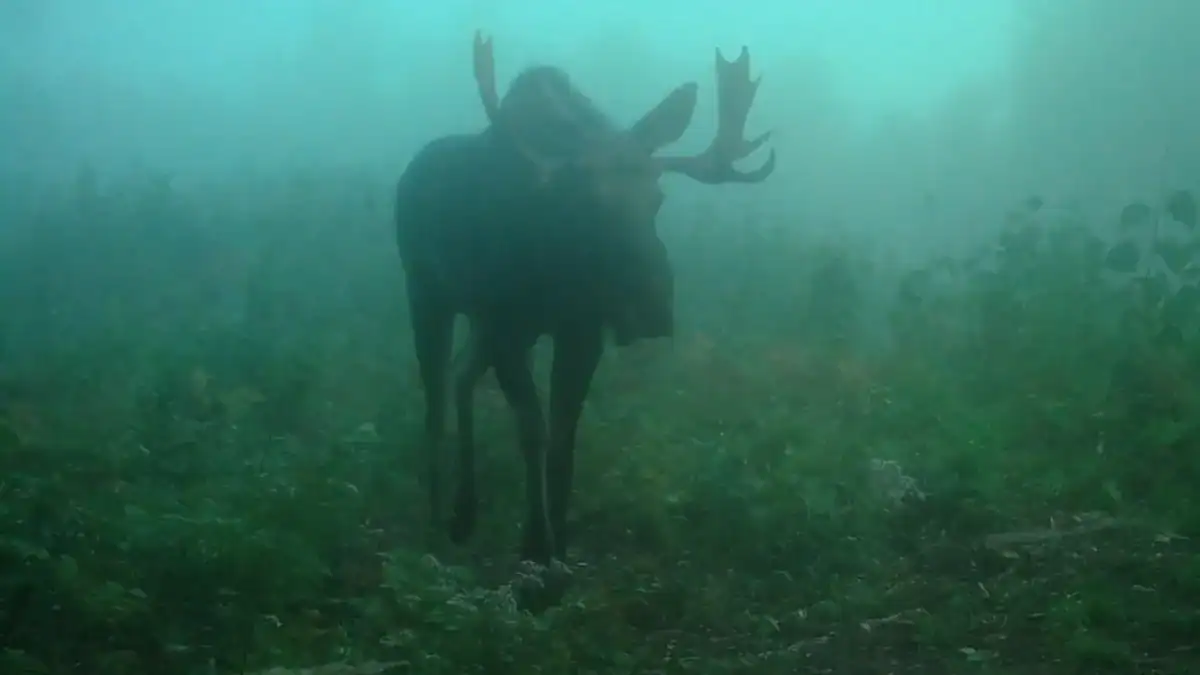
Alaska provides an ideal habitat for moose to reach extraordinary sizes. The vast, untouched wilderness offers abundant vegetation, including willows, birch, and aquatic plants that form the bulk of a moose’s diet. The state’s numerous lakes, ponds, and wetlands create perfect feeding grounds where moose can consume up to 70 pounds of vegetation daily during summer months. This rich nutritional environment allows Alaskan moose to build the substantial body mass needed to survive harsh winters and, in exceptional cases like our record holder, grow to unprecedented sizes.
The geographic isolation of certain Alaskan regions has also contributed to the development of larger moose. In areas with limited human encroachment and minimal fragmentation of habitat, moose populations can maintain healthier genetic diversity and natural movement patterns. The interior and western regions of Alaska, particularly around the Yukon River basin where the record moose was discovered, represent some of the most pristine moose habitat remaining in North America. These areas combine the perfect mixture of food resources, cover, water access, and limited human disturbance that allows moose to reach their maximum potential size.
Verifying the Record: Scientific Documentation

Documenting and verifying the record-breaking Alaskan moose involved meticulous scientific procedures. After the initial harvest, comprehensive measurements were taken by wildlife officials and taxonomists who specialized in cervid (deer family) biology. These measurements included shoulder height, body length, weight, antler spread, and several other morphological features. The specimen was compared against previously documented large moose from Canada, Russia, and other parts of Alaska to confirm its record status. The verification process was particularly rigorous given the exceptional nature of the claim.
The scientific significance of this specimen led to preservation efforts, with portions being prepared for museum display. Detailed records were kept, including photographs, skeletal measurements, and tissue samples that would later prove valuable for comparative studies. While scientific documentation methods in 1897 were less sophisticated than today’s standards involving DNA analysis and digital imaging, the thoroughness of the original measurements and multiple expert verifications have allowed this record to stand uncontested for generations. Modern scientists revisiting the data have confirmed that the measurements appear accurate based on what we now know about maximum potential moose size.
Antler Dimensions: Crown of the Giant
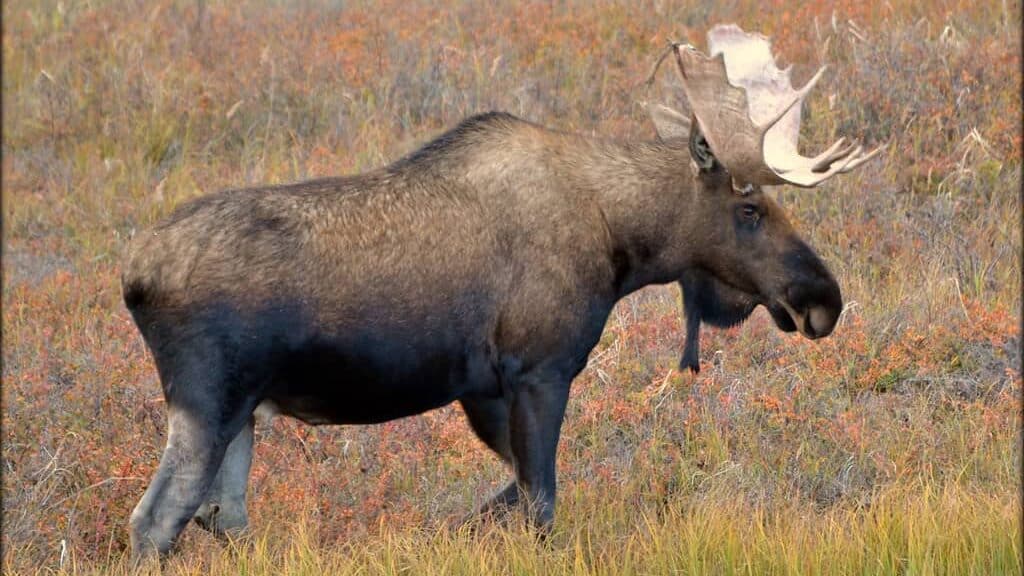
The antlers of the record Alaskan moose were perhaps its most striking feature, displaying a remarkable spread of 79 inches (200.7 cm) from tip to tip. These massive palmate structures weighed approximately 79 pounds (35.8 kg) when removed from the skull, a testament to the incredible amount of energy the bull invested in growing them. The antlers featured the classic “palm” configuration typical of mature Alaskan moose, with broad, flat surfaces and numerous points or tines extending outward. Experts estimated that this particular set had approximately 28 points in total, another exceptional metric for moose antlers.
What makes these antler dimensions even more remarkable is the biological investment they represent. Moose antlers are grown and shed annually, meaning this bull produced these enormous structures in a single growing season of approximately 5 months. During peak growth, the antlers could add up to one pound of new material per day, requiring massive calcium and phosphorus intake. The extraordinary size of this bull’s antlers suggests not only genetic advantages but also exceptional nutrition and health status, allowing it to divert tremendous resources to antler development without compromising its overall condition. For comparison, even large modern Alaskan bull moose typically have antler spreads of 60-70 inches, making the record specimen truly exceptional.
The Biology Behind Exceptional Growth
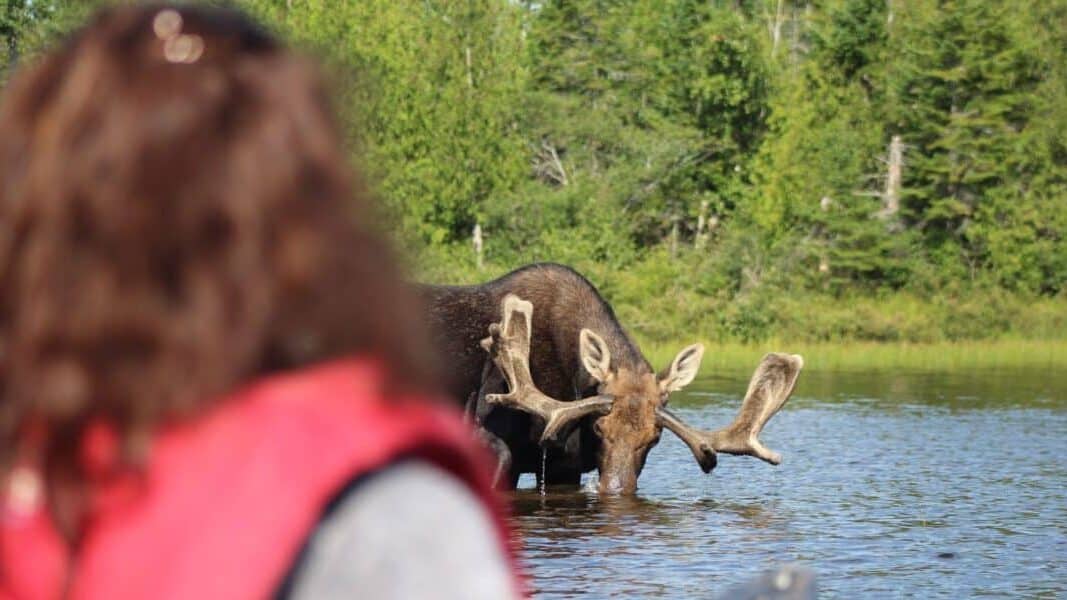
The extraordinary size of the record-breaking Alaskan moose can be attributed to several biological factors working in concert. First, male moose continue growing throughout much of their lives, unlike many mammals that reach adult size relatively early. Biologists estimate that the record bull was likely between 10-12 years old, placing it in the prime of its life with many years of growth behind it. Second, testosterone plays a crucial role in both antler and body development, with dominant bulls typically having higher testosterone levels that promote increased muscle mass and skeletal growth.
Genetic factors also contributed significantly to this moose’s exceptional size. The Alaskan moose subspecies carries genetic markers for larger body frames compared to other moose populations, and within this subspecies, certain genetic lines produce even larger individuals. Additionally, epigenetic factors—how genes are expressed based on environmental conditions—likely played a role. The record bull probably experienced ideal conditions throughout its development: abundant nutrition during critical growth periods, minimal stress from predation or human disturbance, and few serious illnesses or injuries that might have diverted energy from growth. This perfect combination of age, hormones, genetics, and environmental factors created the conditions for record-breaking development.
Comparing the Record Holder to Modern Moose
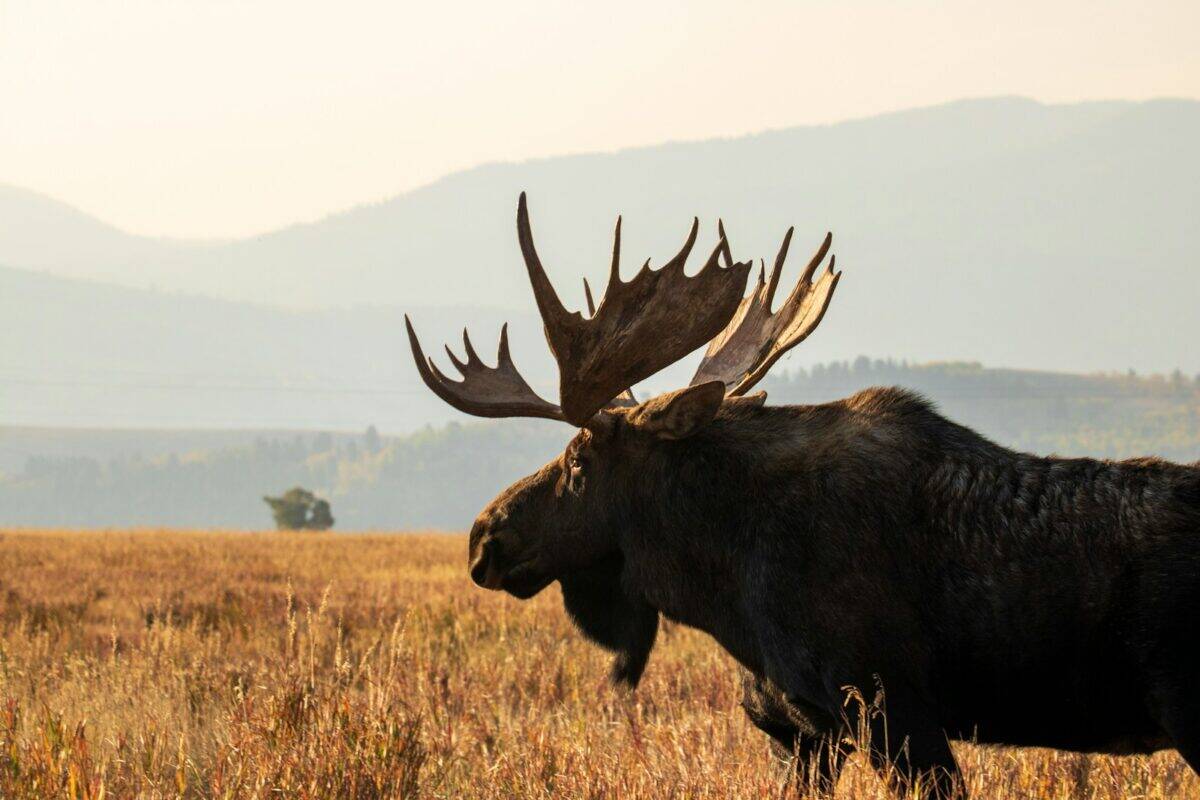
When comparing the 1897 record holder to contemporary moose populations, wildlife biologists have noted several significant differences. Modern Alaskan moose still grow to impressive sizes, but specimens approaching the dimensions of the record holder are exceedingly rare. Current population surveys suggest that the average mature Alaskan bull moose weighs between 1,200-1,400 pounds and stands about 6-7 feet at the shoulder—still massive, but noticeably smaller than the record specimen. This trend toward somewhat smaller average size may reflect changes in habitat quality, increased hunting pressure selecting for faster-maturing but smaller bulls, or climate-related stress factors.
Interestingly, while the absolute size record remains unbroken, modern documentation methods have improved dramatically, allowing for more precise measurements of exceptionally large moose harvested today. Some biologists suggest that if the 1897 specimen were measured using today’s standardized Boone and Crockett or Safari Club International protocols, its measurements might differ slightly from the historical record. However, even accounting for potential measurement discrepancies, the consensus among wildlife experts is that this individual truly was exceptional and that its size remains at or near the biological maximum potential for the species. Trophy records from the past century support this view, as no verified specimen has definitively surpassed the overall dimensions of the 1897 Alaskan giant.
Diet and Nutrition: Fueling Massive Growth
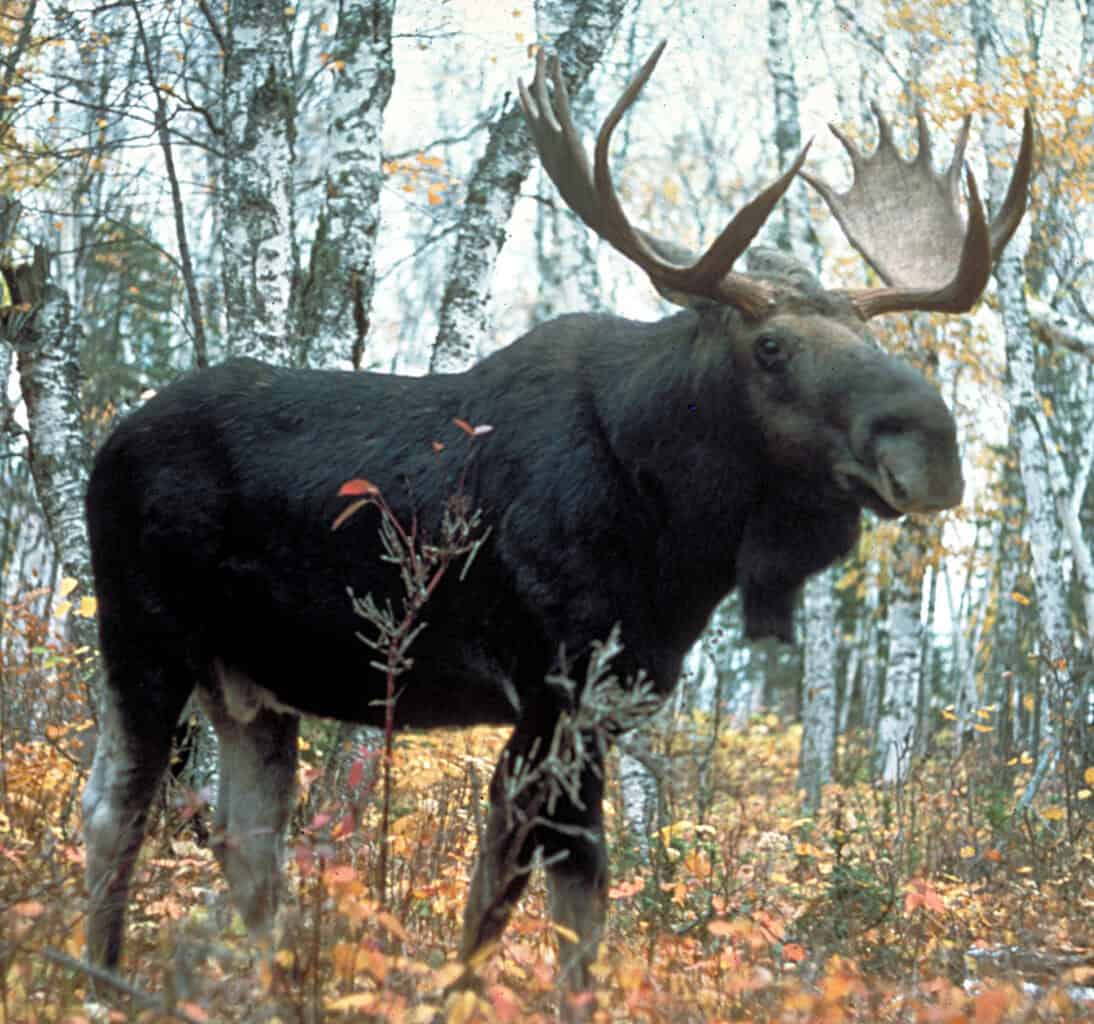
The extraordinary size of the record Alaskan moose was undoubtedly supported by an exceptional diet. Moose are browsers rather than grazers, preferring woody vegetation such as willow, birch, and aspen shoots along with aquatic plants rich in sodium and other minerals. The Yukon River region where the record moose was found offers particularly rich riparian (riverside) vegetation zones with abundant preferred food sources. Scientists estimate that a bull moose of this size would need to consume between 50-70 pounds of vegetation daily during summer months to maintain its massive frame and fuel the energy-intensive process of antler growth.
Nutritional timing also plays a crucial role in achieving maximum growth potential. Alaska’s short but intense growing season produces vegetation with temporarily high nutritional values, allowing moose to pack on weight rapidly during summer months. The record bull likely maximized this opportunity throughout its life, efficiently converting plant matter into body mass and storing fat reserves for winter. Additionally, certain mineral-rich aquatic plants and natural salt licks in the region would have provided essential micronutrients that support bone development and overall health. This optimal nutritional environment, combined with the bull’s likely dominance in securing the best feeding areas, created the perfect conditions for achieving record-breaking proportions.
Climate Factors Influencing Moose Size
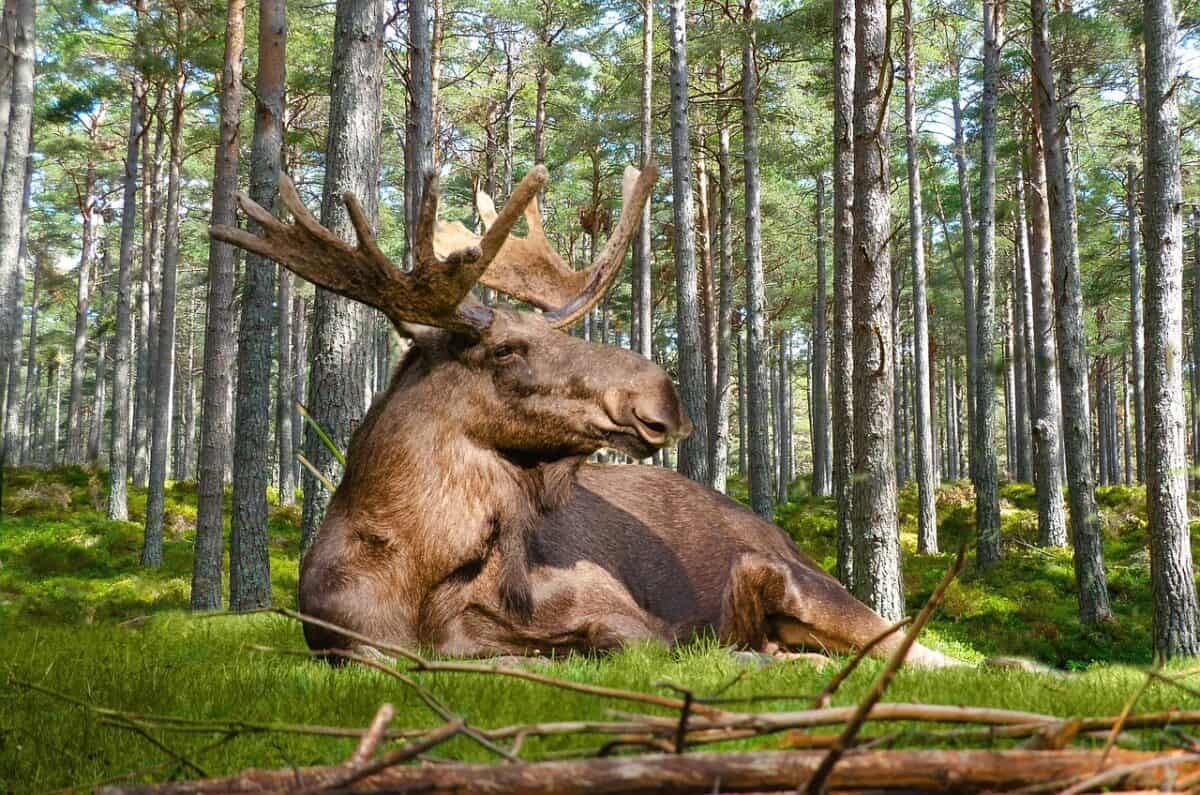
Alaska’s climate has played a significant role in shaping the evolution of exceptionally large moose. Following Bergmann’s rule—an ecological principle stating that populations of a species tend to be larger in colder environments—Alaskan moose have evolved larger body sizes as an adaptation to conserve heat. The larger an animal’s body, the smaller its surface area relative to its volume, allowing it to retain heat more efficiently in cold conditions. The record-breaking moose benefited from this evolutionary advantage, which was particularly well-suited to the late 19th century climate of interior Alaska, characterized by long, cold winters and relatively cool summers.
Climate factors also influence moose size through indirect pathways. The cooler climate of Alaska reduces the presence of certain parasites and insects that plague moose in warmer regions, particularly winter ticks that can significantly weaken moose through blood loss and disrupted feeding. Additionally, the climate supports specific vegetation patterns ideal for moose, with successional forest growth following seasonal patterns that optimize nutritional availability. Modern climate change may be altering these favorable conditions, with warming temperatures in Alaska potentially contributing to increased parasite loads, heat stress, and shifts in vegetation patterns that could make it more difficult for modern moose to reach the exceptional dimensions seen in the 1897 record holder.
The Cultural Impact of Alaska’s Giant Moose

The record-breaking Alaskan moose has transcended biological significance to become an important cultural symbol. For Alaska Natives, particularly Athabaskan peoples of the interior regions, moose have always represented a vital subsistence resource and feature prominently in traditional stories and art. The knowledge that their homeland produced the largest moose ever recorded reinforces cultural connections to the land and its abundant resources. Within hunting communities both in Alaska and worldwide, the 1897 specimen has become almost legendary, representing the ultimate trophy and establishing Alaska’s reputation as home to the world’s most impressive moose.
Tourism and Alaska’s state identity have also been influenced by the record moose. Wildlife viewing opportunities, particularly chances to see massive bull moose, draw thousands of visitors to Alaska annually. The state’s marketing often features images of impressive bull moose, and numerous museums and visitor centers throughout Alaska display antler replicas or information about the record specimen. Conservation messaging frequently references the record bull when discussing the importance of preserving large intact ecosystems that can support animals of such magnitude. In this way, the biological achievement of one exceptional animal has become woven into Alaska’s cultural fabric and economic interests, serving as a powerful reminder of the state’s unique natural heritage.
Conservation Implications for Modern Moose Populations

The record-breaking Alaskan moose provides valuable insights for modern conservation efforts. By understanding the conditions that allowed this individual to reach such extraordinary size—including intact habitat, minimal human disturbance, abundant food resources, and limited hunting pressure—wildlife managers can better develop conservation strategies that preserve the potential for exceptional growth in current populations. Conservation biologists point to the record specimen as evidence of what moose can achieve under optimal conditions, making it a benchmark for ecosystem health and management success.
Modern threats to moose populations include habitat fragmentation from development, increased predation from recovering wolf and bear populations, climate change impacts on vegetation and parasite loads, and hunting practices that sometimes favor harvesting the largest bulls. The historical record serves as motivation for maintaining large protected areas like Alaska’s national parks and wildlife refuges, implementing sustainable harvest regulations that allow bulls to reach maturity, and conducting research on how changing environmental conditions affect moose growth and development. By preserving the conditions that once produced the world’s largest moose, conservationists hope to ensure that future generations of these magnificent animals retain their potential for exceptional growth, even if few individuals ever match the remarkable dimensions of the 1897 record holder.
Conclusion: A Legacy of Natural Wonder

The record-breaking Alaskan moose of 1897 stands as a testament to nature’s capacity for producing truly exceptional specimens when perfect conditions align. This magnificent animal, combining optimal genetics with ideal habitat and nutrition, represents what is likely the upper limit of growth potential for its species. More than a century later, its measurements continue to inspire awe among wildlife enthusiasts, hunters, scientists, and conservationists alike, setting a benchmark that remains unmatched despite advances in wildlife management and nutrition.
The legacy of this remarkable moose extends beyond mere numbers and measurements. It serves as a powerful symbol of wilderness preservation, demonstrating what nature can produce when ecosystems remain intact and functioning at their peak. For Alaska, it reinforces the state’s status as home to some of North America’s most impressive wildlife and most pristine natural habitats. For biologists, it provides valuable insights into the factors that influence mammalian growth and development under optimal conditions.
Perhaps most importantly, this record moose reminds us of the importance of conservation efforts that preserve not just minimum viable populations but the ecological conditions that allow wildlife to reach their full potential. In an era of increasing environmental challenges, the story of Alaska’s giant moose offers hope that with proper stewardship, future generations might still witness animals of truly exceptional proportions roaming the wilderness. This enduring natural record, standing for over 125 years, continues to capture imaginations and inspire conservation of the remarkable species it represents and the ecosystems that support them.
- How Penguins Take Turns at Sea and Nest to Raise Chicks - August 9, 2025
- Dolphin Brains Compare to Those of Apes and Humans - August 9, 2025
- 14 Cutting-Edge Biotech Innovations That Will Shape the Future - August 9, 2025

